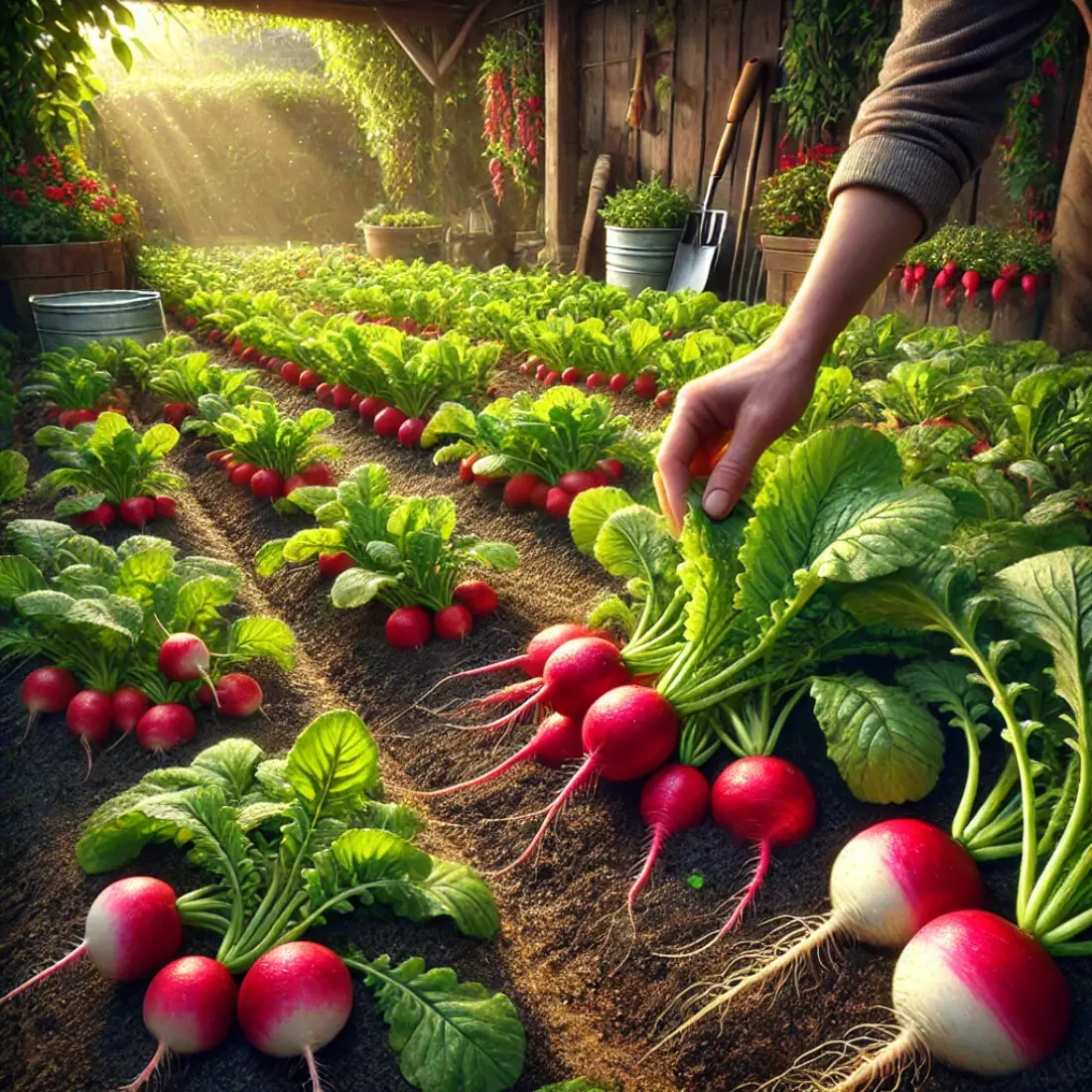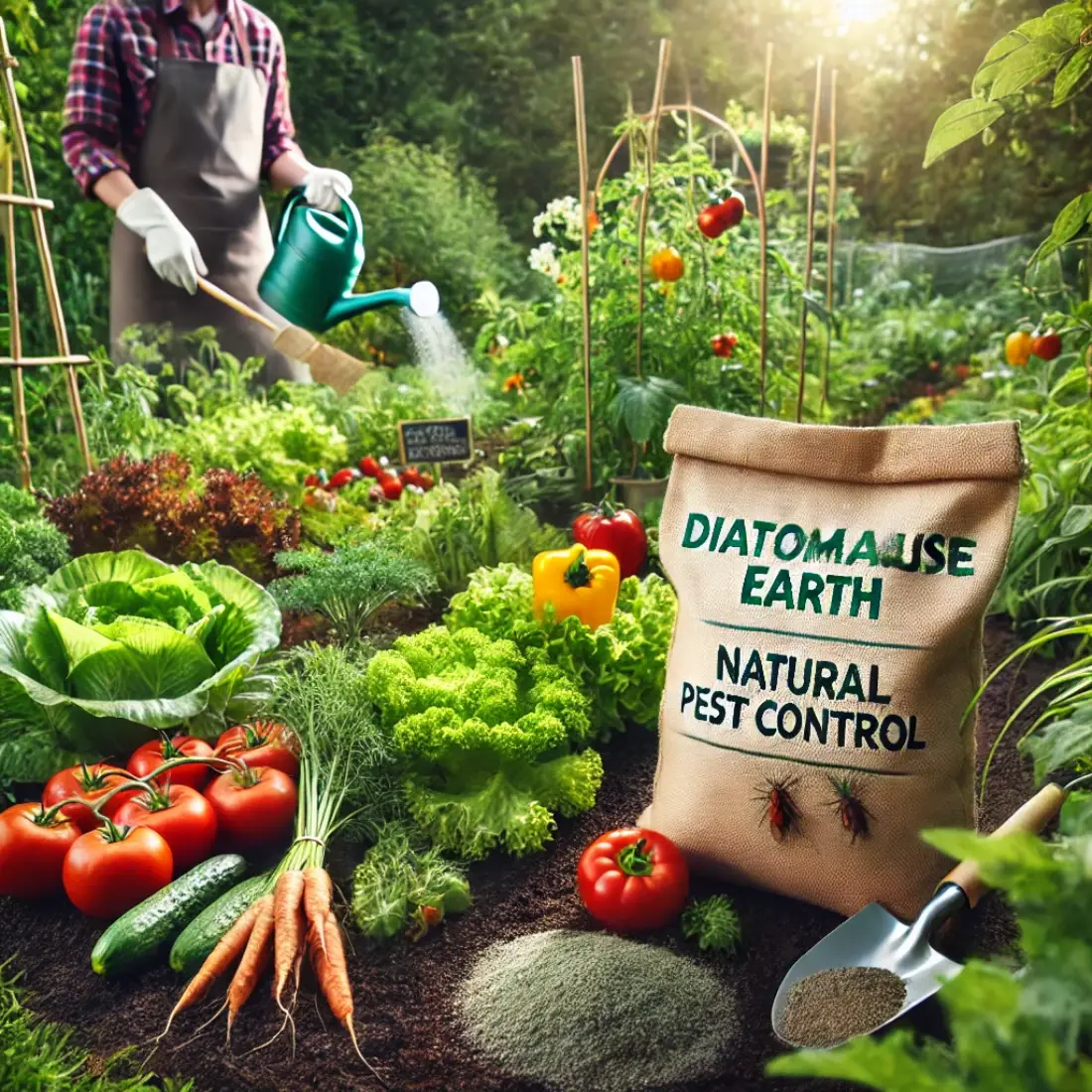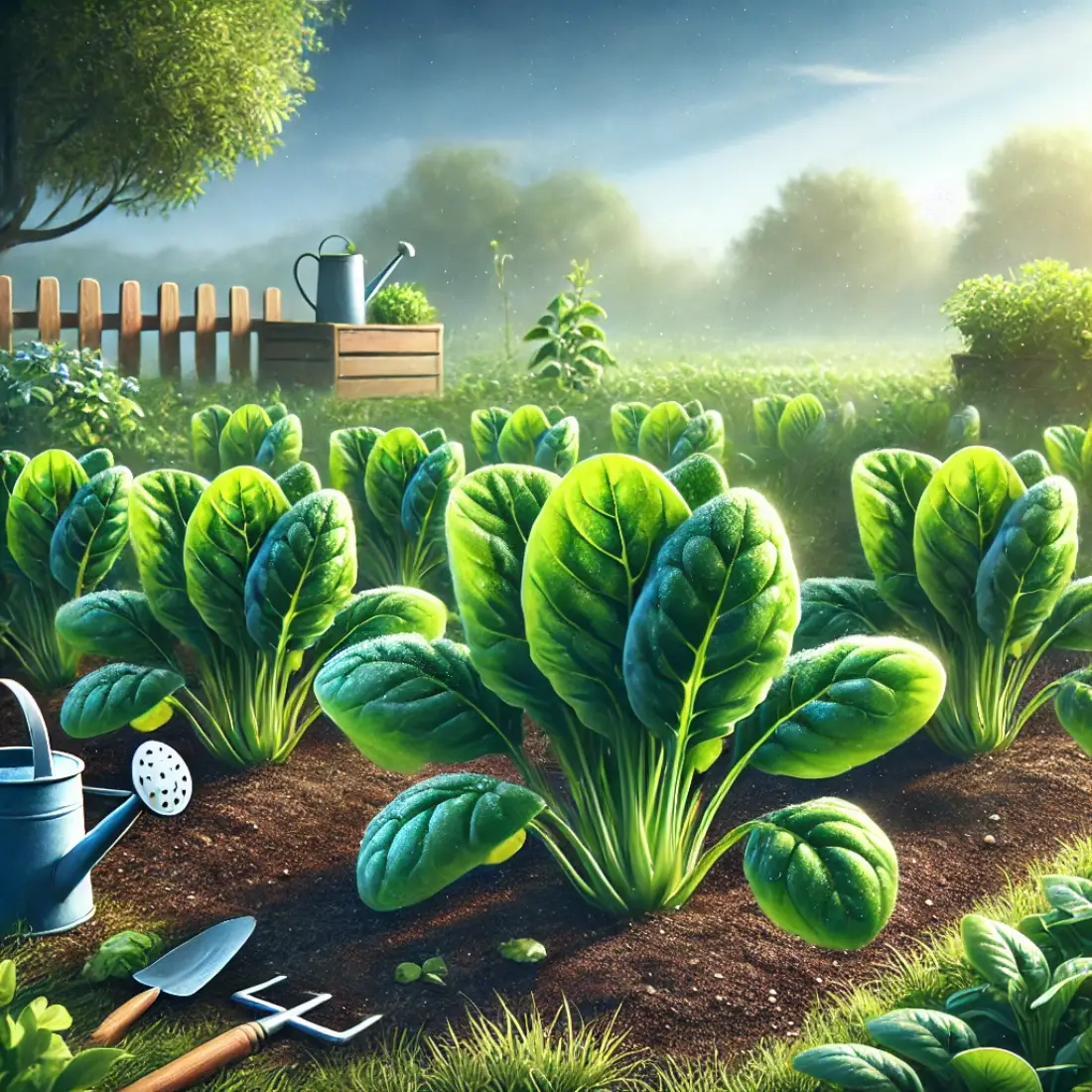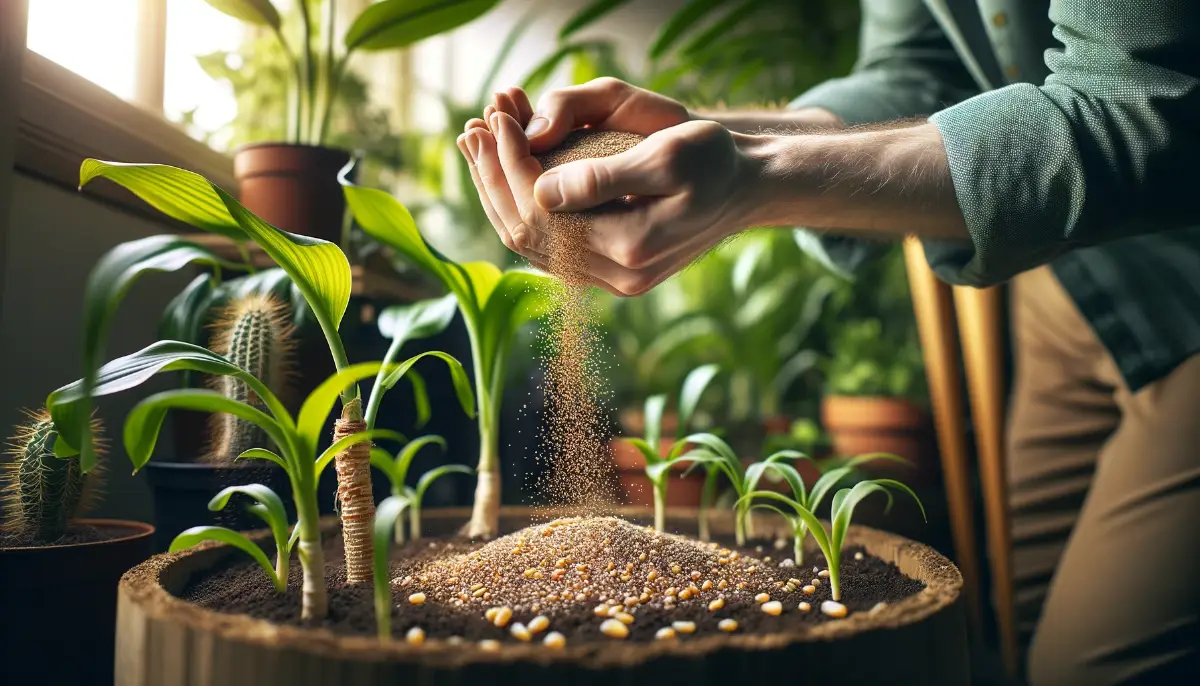Radishes are a staple in many home gardens, celebrated for their crunchy texture and peppery flavor. These root vegetables are not only easy to grow but also quick to harvest, making them an ideal choice for novice gardeners and seasoned green thumbs alike. Whether you prefer the classic red varieties or the unique daikon types, knowing how to grow and care for radishes is essential for a successful harvest.
Radishes thrive in cooler weather and can be planted in both spring and fall, offering flexibility in your gardening schedule. From preparing the soil to ensuring proper watering and fertilizing, each step plays a crucial role in cultivating healthy and vibrant radishes.
Choosing the Right Radish Varieties
Radishes come in various shapes, sizes, and colors, each with unique growing requirements and flavors. Common varieties include the classic red radishes, like Cherry Belle and French Breakfast, which mature quickly and are perfect for salads. White radishes, such as Daikon, are larger and often used in Asian cuisines.
Black radishes, known for their spicy flavor, are a winter favorite. When choosing a radish variety, consider your local climate, soil type, and intended use. For example, Daikon radishes require a longer growing season and thrive in cooler temperatures, making them ideal for fall planting. Selecting the right variety ensures you get the best flavor and size suited to your culinary needs.
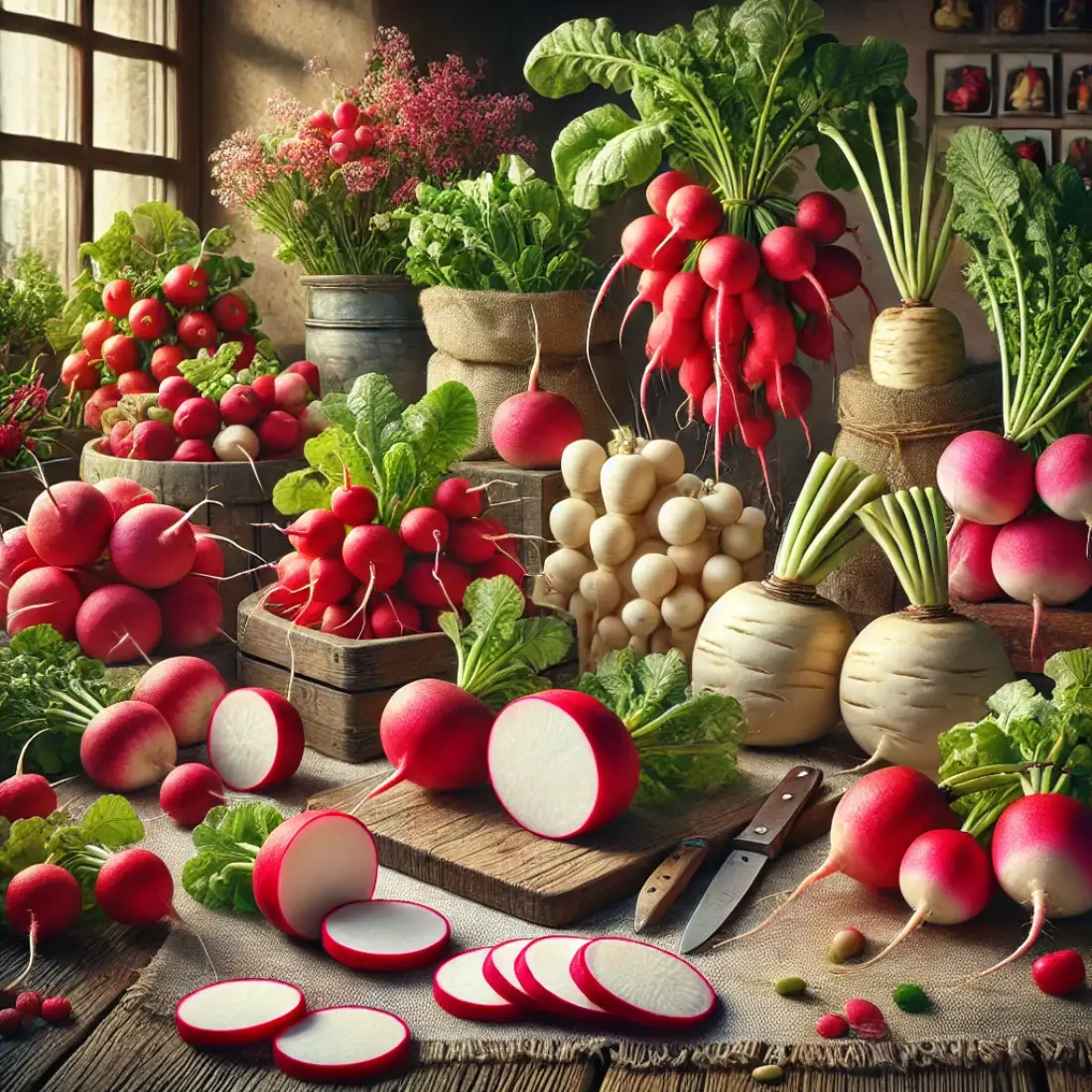
Preparing the Soil for Radishes
Radishes prefer well-draining, loose soil rich in organic matter. Start by choosing a sunny location in your garden. Test your soil pH; radishes grow best in slightly acidic to neutral soil (pH 6.0-7.0). To prepare the soil, remove any rocks and debris, then till to a depth of 8-10 inches to promote root growth.
Incorporate compost or well-rotted manure to enhance soil fertility. Avoid high-nitrogen fertilizers, which can promote leafy growth at the expense of root development. Ensuring your soil is well-prepared will create the ideal environment for radishes to thrive.
Planting Radish Seeds
Planting radish seeds is straightforward and rewarding. Begin sowing seeds directly into the garden soil as soon as the soil can be worked in spring or about 4-6 weeks before the first fall frost. Sow seeds 1/2 inch deep and 1 inch apart in rows spaced 12 inches apart.
For continuous harvest, plant a new batch of seeds every 10-14 days. Radishes germinate quickly, often within 3-4 days. Thin seedlings to 2 inches apart once they reach 1-2 inches tall to ensure adequate space for root development. Proper spacing and timing will help you achieve a consistent and productive radish crop.
Watering Radishes Properly
Radishes require consistent moisture to grow well. Water them regularly, ensuring the soil remains evenly moist but not waterlogged. Radishes need about 1 inch of water per week, either from rainfall or irrigation. Mulching with straw or compost helps retain soil moisture and keeps the roots cool.
Water early in the morning to allow leaves to dry, reducing the risk of fungal diseases. Be mindful of overwatering, which can lead to root rot, and underwatering, which can cause radishes to become tough and woody. Consistent watering is key to producing crisp and tender radishes.
Organic Fertilizing for Optimal Growth
Fertilizing radishes organically ensures healthy growth and contributes to sustainable gardening practices. Radishes, being light feeders, benefit from balanced nutrition without excessive nitrogen, which can lead to lush foliage but poor root development.
Pre-Planting Soil Preparation
- Compost: Before planting, enrich the soil with well-rotted compost. This provides essential nutrients and improves soil structure. Spread a 2-3 inch layer of compost over the garden bed and mix it into the top 6 inches of soil.
- Aged Manure: Incorporate aged manure into the soil a few weeks before planting. Manure adds organic matter and vital nutrients but must be well-aged to avoid burning the plants.
During Planting
- Bone Meal: Sprinkle bone meal in the planting rows to add phosphorus, which is crucial for root development. Follow the recommended application rates on the packaging.
- Rock Phosphate: For a slow-release source of phosphorus, use rock phosphate. This mineral supplement breaks down slowly, providing long-term benefits.
Post-Germination
- Fish Emulsion: Once the radish seedlings emerge, apply a diluted fish emulsion solution (half the recommended strength) to provide a balanced nutrient boost. Fish emulsion is rich in nitrogen, phosphorus, and potassium.
- Seaweed Extract: Spray seaweed extract on the foliage every two weeks. It contains trace minerals and growth hormones that promote healthy plant development and stress resistance.
Maintenance
- Compost Tea: Every two weeks, water radishes with compost tea to supply a steady stream of nutrients. Compost tea is made by steeping compost in water, creating a nutrient-rich solution.
By using these organic fertilizing methods, you can ensure your radishes receive the nutrients they need for optimal growth while maintaining an eco-friendly garden.
Thinning and Weeding Radishes
Thinning is crucial for radish development. Once seedlings reach 1-2 inches in height, thin them to 2 inches apart to prevent overcrowding. This spacing allows roots to expand without competition.
Regular weeding is also essential, as weeds can rob radishes of nutrients and water. Hand-weed gently around the plants to avoid disturbing the shallow roots. Mulching helps suppress weeds and retain moisture. Proper thinning and weeding practices will ensure your radishes have the space and resources they need to grow to their full potential.
Troubleshooting Common Radish Growing Problems
Common issues in growing radishes include bolting, splitting, and poor root development. Bolting occurs when radishes flower prematurely, usually due to hot weather or inconsistent watering. To prevent bolting, plant in cooler seasons and maintain even soil moisture. Splitting can result from irregular watering.
Keep soil consistently moist to avoid this problem. Poor root development often stems from overcrowding or excessive nitrogen. Ensure proper thinning and use balanced fertilizers. If radishes are too spicy or tough, try harvesting them earlier. By addressing these issues promptly, you can ensure a successful radish crop.
Pest and Disease Management in Radishes
Radishes are relatively pest-resistant, but they can still fall victim to common garden pests like aphids, flea beetles, and root maggots. To protect your plants, use floating row covers to keep pests away.
Natural predators like ladybugs can help control aphids. Diatomaceous earth sprinkled around plants can deter flea beetles. For root maggots, rotate crops annually and avoid planting radishes in the same spot each year. Radishes can also suffer from fungal diseases like downy mildew and clubroot.
Ensure good air circulation by spacing plants properly and watering at the base. Remove and destroy infected plants to prevent the spread of disease. Effective pest and disease management will keep your radishes healthy and productive.
Harvesting Radishes
Radishes are typically ready to harvest 3-4 weeks after planting, depending on the variety. Check your seed packet for specific maturation times. Harvest when the radishes are about 1 inch in diameter. Gently pull them from the soil, grasping the base of the foliage. If left in the ground too long, radishes can become woody and pithy.
For extended harvests, plant successions every 10-14 days. After harvesting, remove the leaves to prevent them from drawing moisture from the roots. Enjoy your fresh radishes raw in salads, pickled, or cooked in various dishes.
Storing and Using Harvested Radishes
To store radishes, first remove the leafy tops to prevent moisture loss. Rinse the roots and pat them dry. Store in a plastic bag in the refrigerator’s crisper drawer, where they can stay fresh for up to two weeks.
For longer storage, you can pickle radishes. Radishes add a peppery crunch to salads, sandwiches, and slaws. They can also be roasted, sautéed, or added to soups for a unique flavor. Experiment with different culinary uses to enjoy your radish harvest in various dishes.
FAQs about Growing and Caring for Radishes
How often should I water radishes?
Radishes need consistent moisture to thrive. Water them regularly to keep the soil evenly moist, but avoid waterlogging. They typically require about 1 inch of water per week.
What is the best time to plant radishes?
The best time to plant radishes is during the cooler months of early spring and fall. Radishes prefer temperatures between 50°F and 70°F.
How do I know when radishes are ready to harvest?
Radishes are ready to harvest when they are about 1 inch in diameter and easily visible above the soil line. This usually takes 3-4 weeks from planting, depending on the variety.
Can I grow radishes in containers?
Yes, radishes can be grown in containers. Choose a pot at least 6 inches deep with good drainage. Use a loose, well-draining potting mix and ensure the container receives adequate sunlight.
Why are my radishes all tops and no roots?
Excessive nitrogen in the soil can cause radishes to produce more foliage and less root. Ensure balanced fertilization and avoid high-nitrogen fertilizers.
How do I prevent my radishes from bolting?
Bolting occurs when radishes flower prematurely, usually due to hot weather. To prevent bolting, plant radishes in cooler seasons, provide consistent moisture, and thin seedlings to avoid overcrowding.
What pests commonly affect radishes, and how can I control them?
Common pests include aphids, flea beetles, and root maggots. Use floating row covers to protect plants, introduce beneficial insects like ladybugs, and practice crop rotation to minimize pest problems.
How do I store harvested radishes?
Remove the leafy tops and store radish roots in a plastic bag in the refrigerator’s crisper drawer. They can stay fresh for up to two weeks. For longer storage, consider pickling radishes.
Why are my radishes cracking or splitting?
Cracking or splitting is often due to inconsistent watering. Keep the soil evenly moist to prevent radishes from taking up too much water at once, which can cause them to split.
Can radish greens be eaten?
Yes, radish greens are edible and nutritious. They can be used in salads, soups, or sautéed like other leafy greens. Ensure they are thoroughly washed before consumption.

